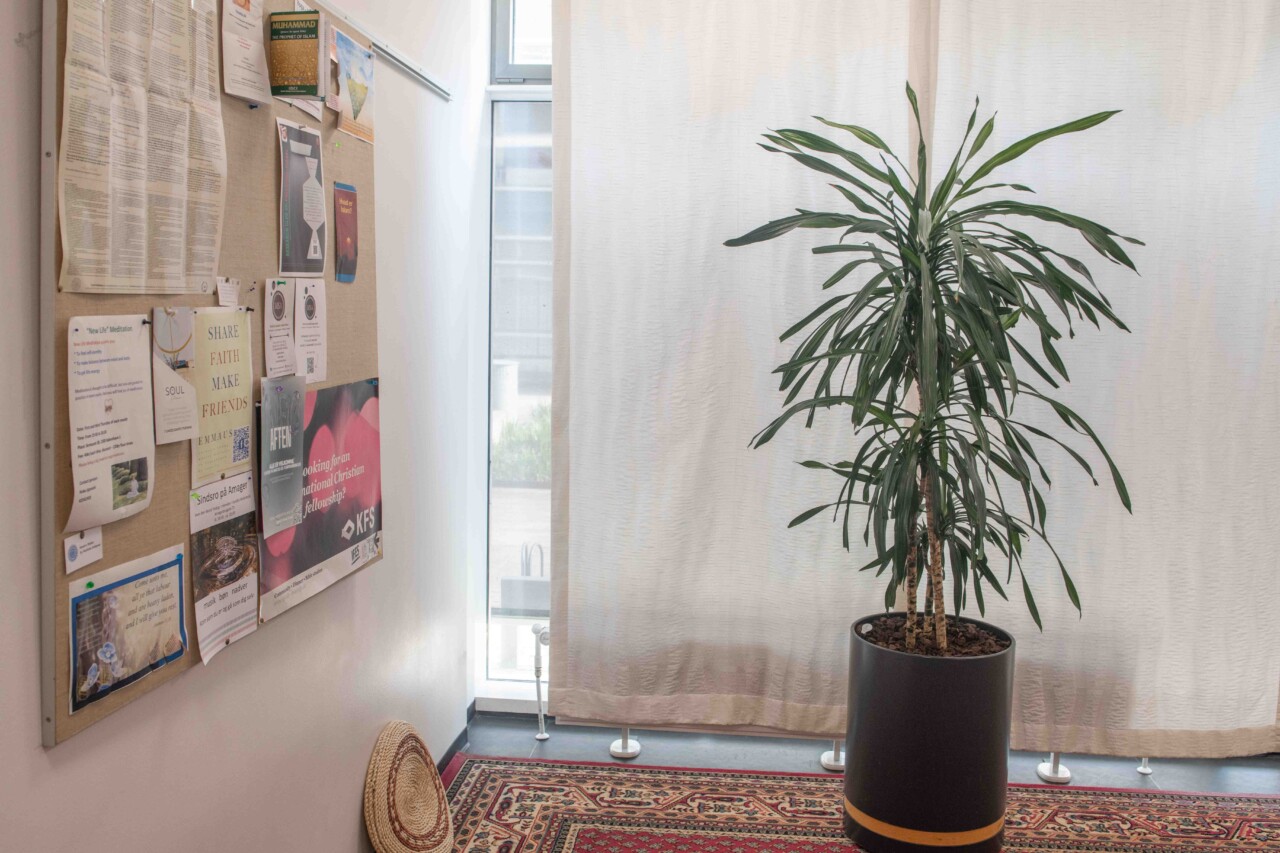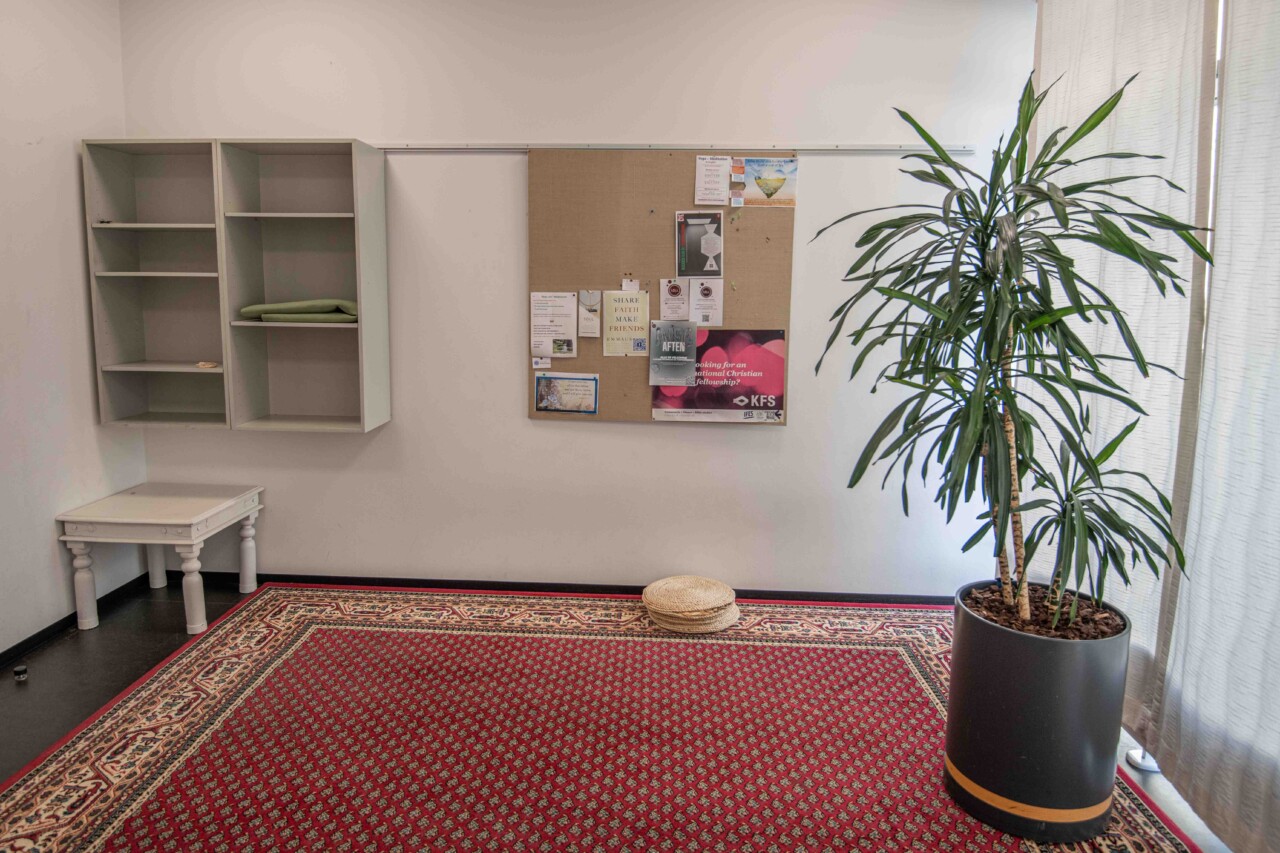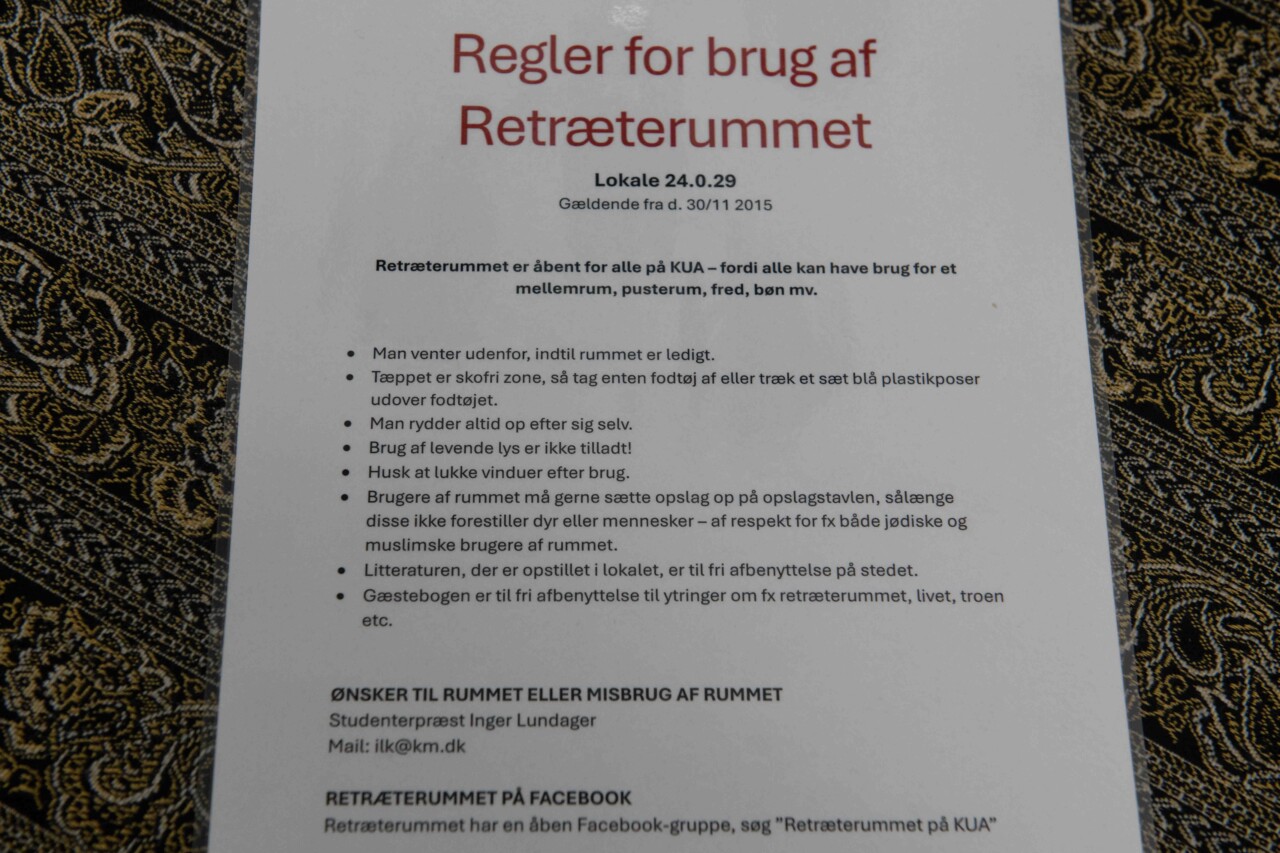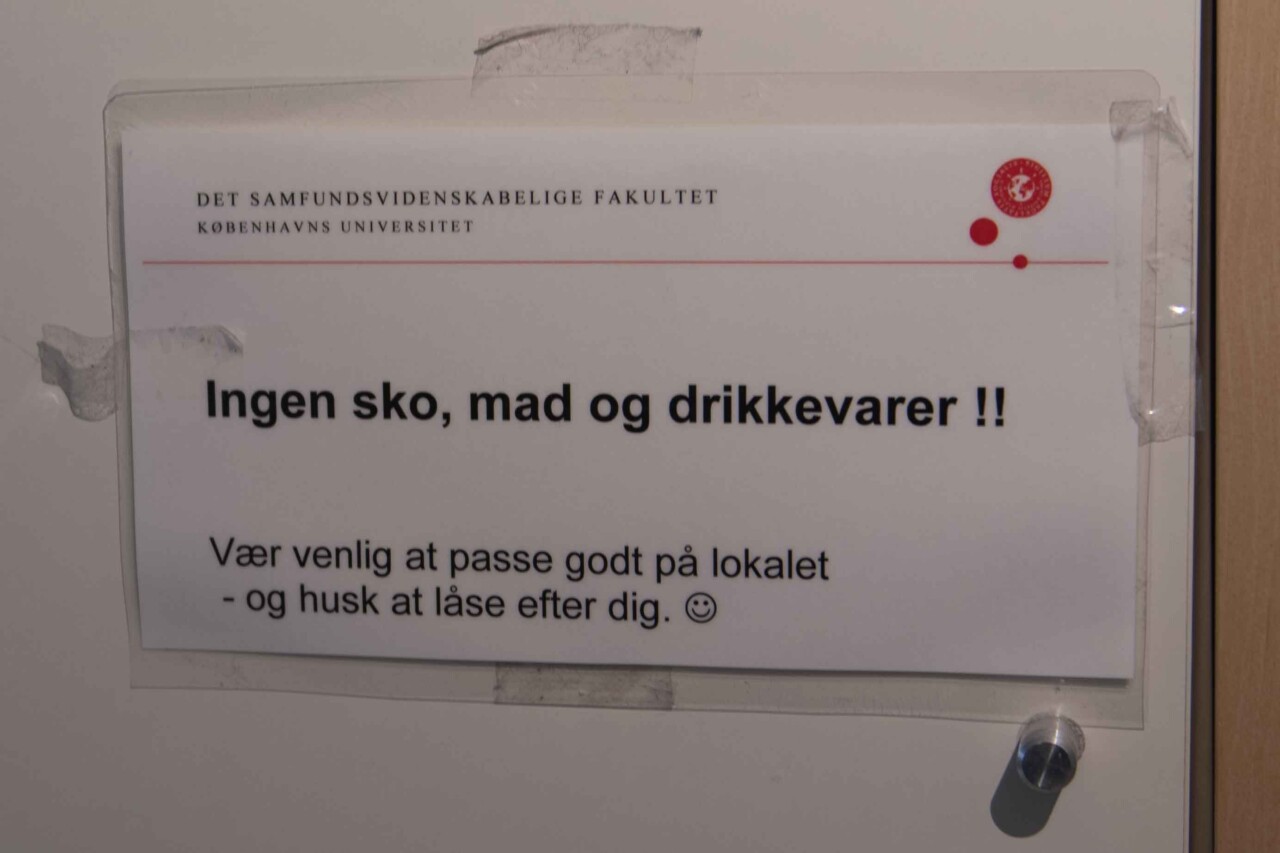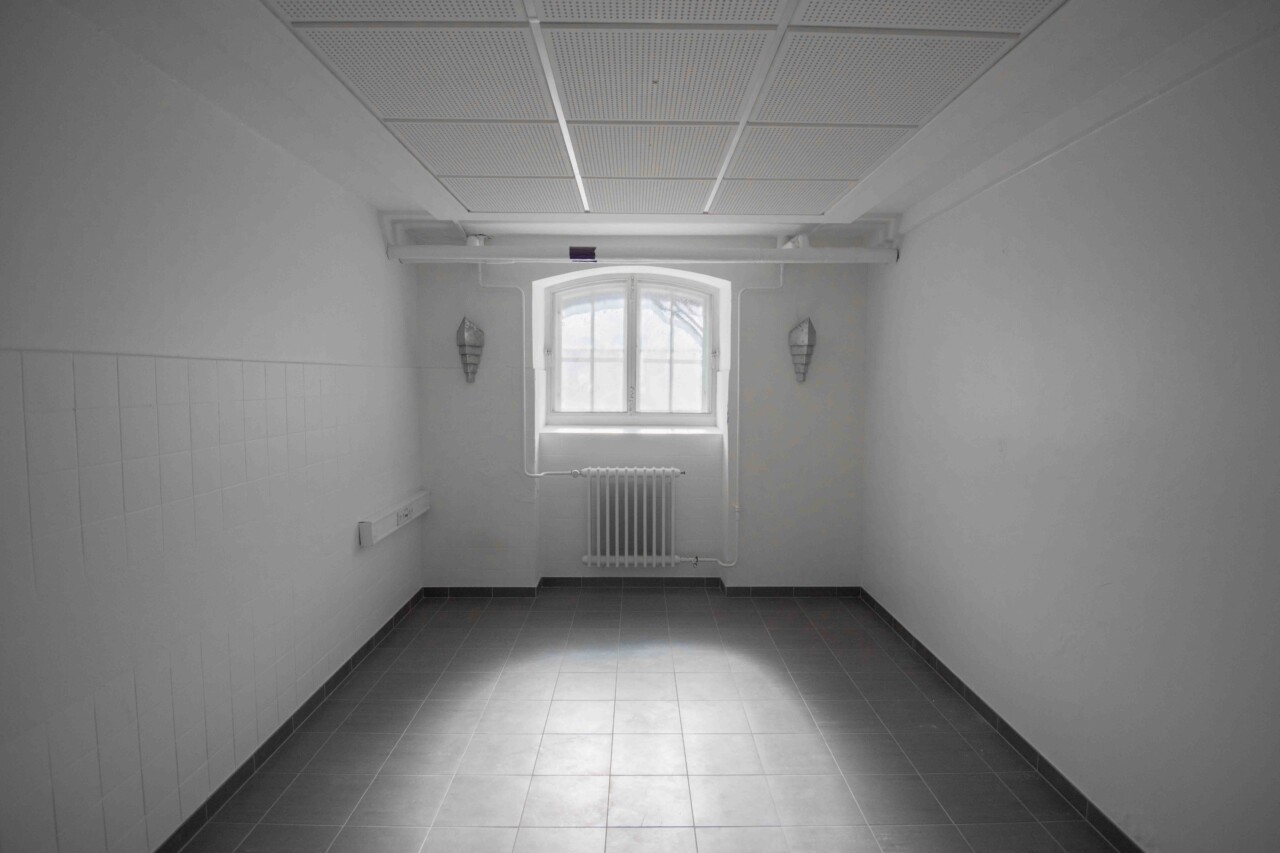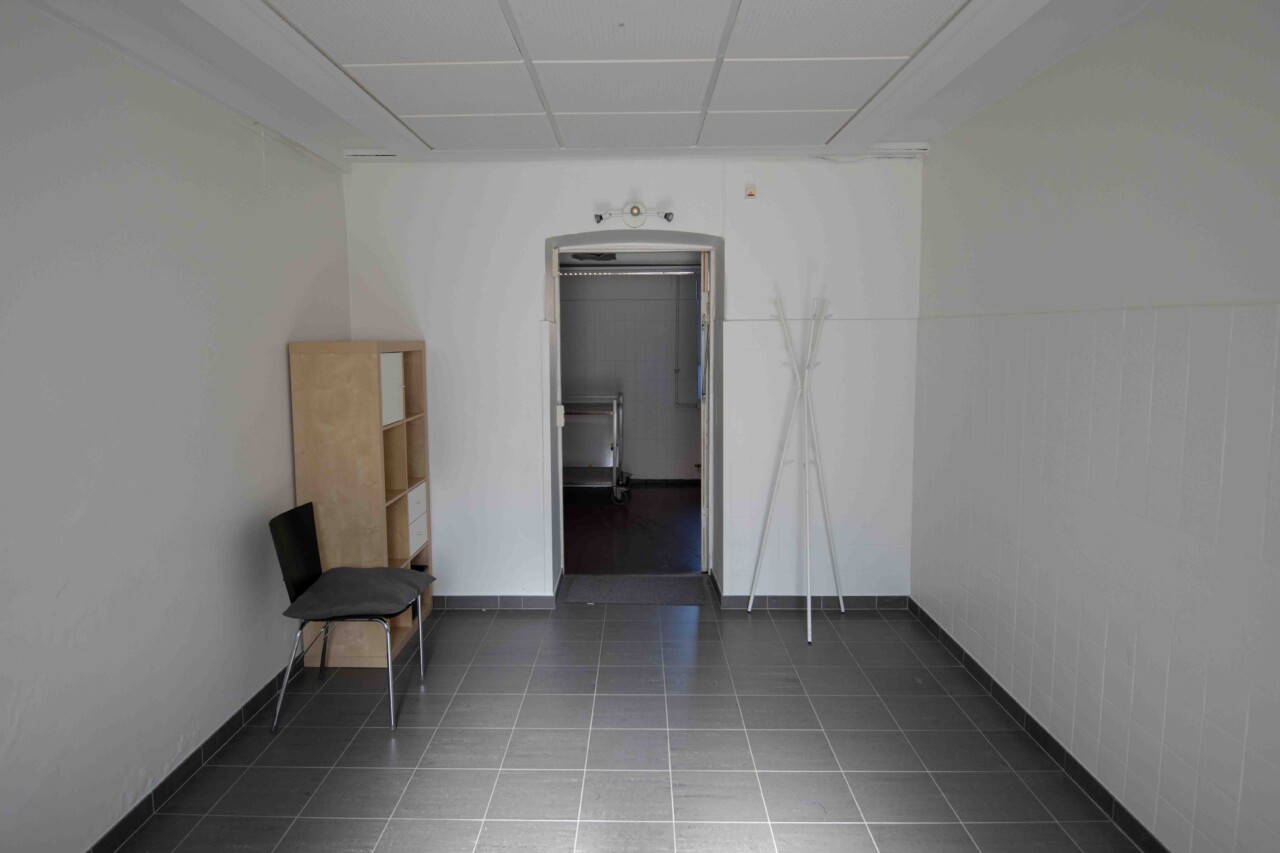Universitetsavisen
Nørregade 10
1165 København K
Tlf: 35 32 28 98 (mon-thurs)
E-mail: uni-avis@adm.ku.dk
—
Politics
Empty — All personal effects — apparently also including whiteboards and room dividers — were removed from UCPH prayer rooms on 3 April. What remains is something that resembles a stark monastic cell — and that may well be the point.
Users of the University of Copenhagen (UCPH)’s prayer rooms were to collect their personal belongings by Thursday 3 April, otherwise they will be removed. This was the announcement on KUnet following months of public debate.
The rooms — also referred to as quiet rooms, retreat spaces, or meditation rooms — have come under fire for being de facto gender-segregated, and for possibly being used by Muslim students to monitor each other. This was the conclusion of a Danish government-appointed Commission for the Forgotten Women’s Struggle, which was set up to tackle social control. One of its recommendations was a nationwide regulation of prayer rooms at Danish universities, and this had reignited a long-standing debate.
A recurring theme in the criticism has been the interior design of the rooms. In addition to movable partitions — which in several rooms have been used to separate men and women — critics have pointed to carpets, books, and pamphlets associated with Islam. It was this criticism that on 1 April prompted UCPH to announce that the rooms must be cleared of personal items, and that from now on they will »be kept free of anything not part of campus administration furnishings.«
The university will carry out regular inspections to ensure the rooms remain religiously neutral. But what does that really mean? And what exactly is changing? The University Post popped out to visit a few of the UCPH prayer rooms — before and after the clear-out.
Our first stop on our prayer room sightseeing tour — before the clear-out — was South Campus.
On the far edge of the campus, in building 24, is the retreat room. On the way there, the University Post passes several group rooms, where diligent students are immersed in presentations and exam prep. The retreat room is easy to miss: To the uninitiated it might seem to be just another study room along the hallway.
A scent of incense lingers in the air as you step inside. The floor is covered with a Persian wall-to-wall carpet, and a couple of cushions lean against one wall — as if inviting visitors to sit down and take a break.
There is a notice board and a bookshelf on the opposite wall, offering visitors a wide range of spiritual materials: pamphlets for Christian prayer meetings are alongside flyers for retreats, yoga, meditation, and advertisements for Muslim organisations.
Among these, the University Post also finds two pamphlets from Hizb ut-Tahrir, which have previously been debated in Danish media in connection with UCPH’s prayer rooms — as well as a book by the Canadian imam Bilal Philips, who appears on the Danish government’s list of banned hate preachers.
On the floor below the bookshelf are a few prayer rugs and one yoga mat. At the opposite end of the room, a small table is covered with an embroidered piece of cloth in Middle Eastern style. On the table is a multi-armed candelabra, and the arrangement as a whole evokes the impression of an altar.
You have no doubts that this room was set up for religious use when the University Post visited it before the clear-out.
A couple of weeks later, the room has changed significantly. The scent of incense is gone. The ‘altar’ with the Middle Eastern cloth and the candelabra is now just an empty table, the bookshelf is bare, and several flyers have been removed from the notice board. The prayer mats that were in the bookshelf are also gone.
The yoga mat is still there, however, as are the floor cushions. The Persian wall-to-wall carpet has also been allowed to stay.
The second stop on the University Post’s tour of retreat rooms is on the second floor of the old Panum building. The route passes a small cafeteria before arriving at the ‘devotion room’, as they call it here.
During our first visit, the room at Panum is so crowded that a small queue has formed outside. It is lunchtime, and the room appears to be in particularly high demand. The University Post has to therefore give up on entering and taking photos that day.
Fortunately, the room has not yet been cleared when we return. The first thing that catches your eye is the new UCPH guidelines, which have been posted on the door. They remind users that all personal belongings will be removed on 3 April as part of the university’s effort to ensure that the rooms remain accessible to everyone.
Until then, everything proceeds as usual. The room is well attended, and the University Post notes that prayer this afternoon appears to be gender-segregated — with men on one side of a curtain, and women on the other. An additional curtain has been installed, allowing the room to be divided into three zones. However, this one is not in use while the University Post is present.
Users can help with the clear-out by taking some of the many books from the shelves. In the boxes on the bookshelf are prayer mats and headscarves, freely available for those who do not bring their own. A shelf holding prayer stones hangs on the wall.
One visitor, who uses the room for prayer, says to the University Post that she understands the need for the space to appear more neutral. But she regrets that she will now have to carry all her prayer items with her in the future.
Because if the room ends up like the one at South Campus, it is likely that most of the furnishings will be removed. And that means it will look quite different by next week.
The tour ends at the central social science campus CSS, which features a rather more austere prayer room. The space resembles a cell, tucked away deep in the basement of the old municipal hospital, where sunlight is scarce. The door can only be opened if you have applied for special access using your student ID, and information about the room is passed on by word of mouth.
Tiles cover the floor and walls, and the furnishings consist of a single chair in the corner and an empty bookshelf, on which a sign with the room’s sparse guidelines is taped: »No shoes, food or drinks!!« A lonely whiteboard hangs on one wall, and a movable partition stands in one corner — otherwise, the room is completely empty.
Despite its sparse furnishings, the room is still in use. The University Post’s guide for the first visit to the retreat room is Muhammed Huzeyfe Aydin. He is a political science student in his eighth semester and chair of the Muslim Student Association City Campus. Muhammed Huzeyfe Aydin explains that the rules for the room are simple: you take your belongings with you when you leave, and you respect other users. The room is open to everyone.
»The décor is pretty bare, but it serves its purpose. Personally, it doesn’t really matter to me what the room looks like. I’ll admit, the room out on South Campus is cosier, but that’s just about comfort. The most important thing is that the room is accessible,« he says.
Muhammed Huzeyfe Aydin uses the room for prayer. He explains that the Muslim daily prayers, especially during winter, fall very close together and often overlap with lectures or lunch breaks.
»My day would suddenly become quite hectic if I had to go home twice or spend my entire lunch break finding an empty room at CSS,« he says.
According to him, the number of users varies.
»Sometimes I’m here alone, other times there are two or three of us. It makes no difference — we respect each other. Everyone knows not to disturb anyone and to mind their own business.«
You wouldn’t think the retreat room at CSS could be furnished any less. But when the University Post visits the room again during the second round, the partition and the empty whiteboard are gone.
What remains is a space whose purpose would be impossible to guess if you didn’t already know. And perhaps that’s precisely the point.
